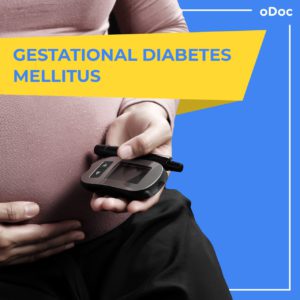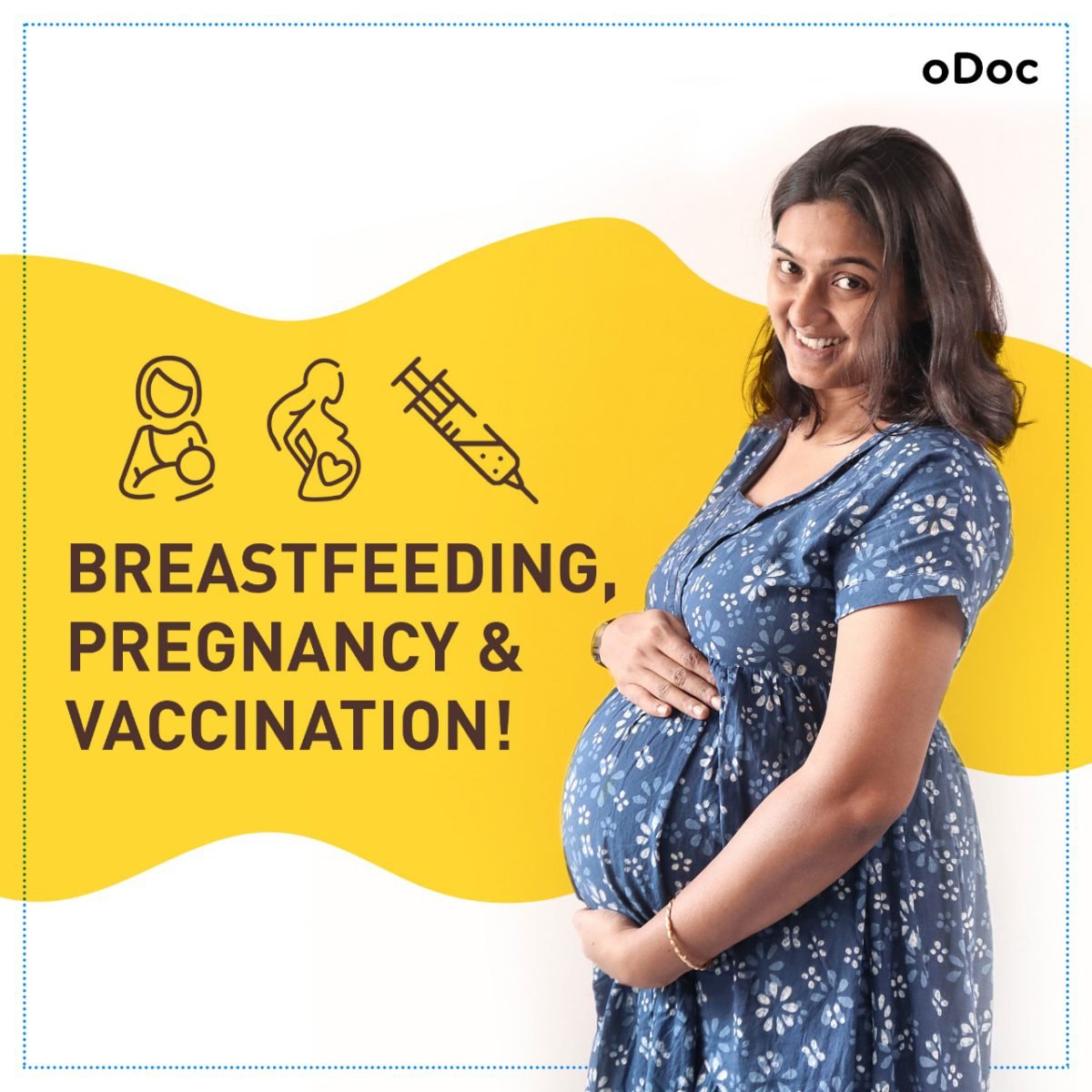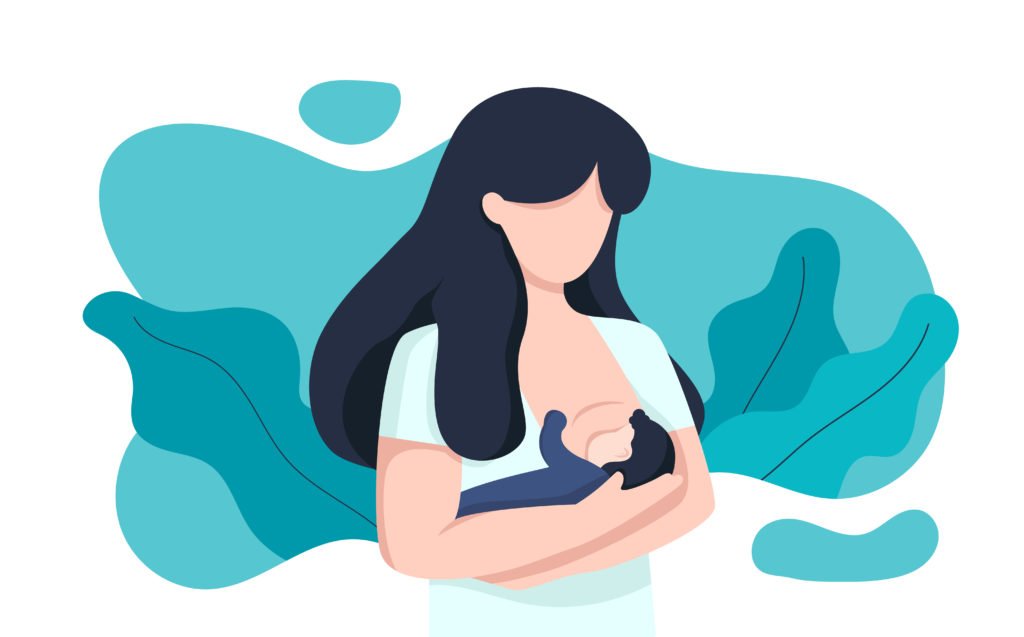අලුත් අම්මලාට තියන ප්රශ්න
පුංචි දරුවෙකු මෙලොව එළිය දැකීමෙන් අනතුරුව සාමාන්යය සමාජයට මුහුණ දෙන තෙක් ම දෙමාපියන් බොහෝ අවධානයෙන් කටයුතු කරයි. දරුවා තුළ පෙන්වන කුඩා වෙනස්කම් පවා දෙමාපියන් වේදනාවට පත් කරනු ඇත. මෙම ලිපිය රචනා කිරීමේ දී අලුත් මවුවරුන් දහතුන් දෙනෙකුගේ සහය ලබා ගත් අතර බොහෝ මවුවරුන් වේදනාවට පත් වීම පිළිබඳව නිශ්චිත හේතුවක් ද නොතිබිණි.
‘ අනේ මන්දා ළමයා ලෙඩ වුණා කියන්නෙම මගේ මුළු ලෝකෙම කඩා වැටුණා වගෙයි. සමහර වෙලාවට ළමයා මදුරුවෙක් කනවා දැක්කත් මම ගොඩාක් කලබල වෙනවා’
ඉහත ඇත්තේ මවුවරුන් තමන්ගේ දරුවන් පිළිබඳව දක්වන සෙනෙහසේ සුළු පැතිකඩකි. මෙම ලිපිය මගින් අලුත් මවකට දරුවා සම්බන්ධයෙන් ඇති වන බොහෝ ගැටලුවලට විසඳුම් ලබා දෙනු ඇත.

මගේ පැටියා නිතරම අඬන්නේ ඇයි ?
පුංචි කිරි දරුවෙකු නිවසට ගෙනා පසු ලාංකික අපි චාරිත්රයක් ලෙස ‘බාලගිරි දෝෂය අද නොවේ හෙට’ යන දැන්වීම නිවසට ඇතුළු වන තැනත් නිවසින් පිට වන තැනත් දර්ශනය වන ආකාරයෙන් සඳහන් කරන්නෙමු. නමුත් කිරි දරුවෙකුගේ හැඬීම සිදු වන්නේ මිථ්යා විශ්වාසයන් නිසා නොවේ. ඔබ අලුත් මවක් නම් කල් යත්ම දරුවාගේ සියලු හැසිරීම් තුළින් පවසන ඕනෑ එපාකම් තේරුම් ගත හැකි මට්ටමකට පැමිණෙයි. එතෙක් ඔබේ දරුවාගේ හැඬීමට හේතු විය හැකි ලක්ෂණ කිහිපයක් නම් මෙසේය,
- නිවසේ පිරිස වැඩි වීම නිසා පරිසරය කලබලකාරී වීම
- කුඩා දරුවාට බඩගිනි දැනීම
- නිදිමත, තෙහෙට්ටුව හෝ පාළු ස්වභාවයක් දරුවාට දැනීම
- මළ මූත්රා පිට වුණ අවස්ථාවන්වල
- බබා නාවන අවස්ථාවන්වල
- නින්දෙන් අවදි වූ විට
- මව, පියා හෝ දරුවාට සමීප කිසිවෙක් ළඟ නොමැති අවස්ථාවන්වල
මේ ආදී විවිධ හේතු කුඩා දරුවෙකු ගේ හැඬීමට හේතු විය හැකිය.
නමුත් පුංචි දරුවෙකුගේ එකම සන්නිවේදන මාර්ගය හැඬීමයි. ඇතැම් විට මාස නවයක් කුස තුළ සිට නව පරිසරයකට පැමිණි විට එම තත්වයට අනුවර්තනය වීමේ දී ටික දිනක් යන තුරු ඔවුන් කඳුළු සලයි. දරුවාගේ සංවේදී බව සහ අදහස් ප්රකාශ කිරීමේ ආකාරයක් ලෙසට හැඬීම ගත හැකිය.

චූටි බබා වමනේ දැමීම
පුංචි බිළිඳා ඉපදී පලමු මාස කිහිපය තුළ ඔවුන් ගන්නා සියලු දේවල් වමනය කිරීමට පෙළඹෙයි. එයට හේතු වන්නේ කුඩා දරුවාගේ උදරය සහ උගුර සම්බන්ධ වන නාලයට අදාළ කපාටය වර්ධනය වී නොමැති වීමයි. අලුත උපන් බිළිඳුන් වමනය කිරීමට හේතු විය හැකි කරුණු කිහිපයක් දැක්විය හැකිය.
- ආහාර දිරවීමේ අපහසුතා
- දරුවා අධිකව හැඬීම
- දරුවාට කැස්ස ඇති වීම
- සෙම්ප්රතිශ්යාව
- කන ආශ්රිතව ඇති වන ආසාදන
- ආහාර මගින් ඇති වන ආසාත්මිකතා
- මුත්රා ආසාදන
- වාහනවල ගමන් කිරීමේදී ඇති වන වමනය
නමුත් දෙමාපියන් වශයෙන් ඔබ නිරතුරුව තම දරුවාගේ වමනය ස්වභාවය පිළිබඳව අවධානය යොමු කළ යුතු අතර දරුවාගේ වමනය සම්බන්ධයෙන් අනතුරුදායක අවස්ථා හතරක් අපට ඔබේ අවධානය වෙනුවෙන් ඉදිරිපත් කළ හැකිය.
- දරුවාගේ වමනය වේගවත් වීම ( වමනය කහ පාට හෝ කොළ පාට තත්වයක් ගන්නේ නම් එය Volvulus තත්වයක් විය හැකිය )
- දරුවා පැය අටක කාලයක් මුත්රා නොකිරීම
- රතු පැහැති ජෙලි ස්වභාවයෙන් යුතු මලපහ පිට කිරීම ( මෙම තත්වය දරුවාට Intussusception නම් තත්වයක් නිසා ඇතිවීමට ඉඩ ඇත )
- කුඩා දරුවා නිල් පැහැයක් ගැනීම
චූටියට ගුඩුස් යවන්නේ කොහොමද ?

චූටි පැටියට ගුඩුස් ගියේ නැත්නම් අම්මලා ඉන්නේ ගොඩාක් සිත් තැවුලෙන්. නමුත් මවුකිරි දීමේ දී නිවැරදිව බබාගේ කට පියයුරට සම්බන්ධ කර ගන්නවා නම්, මවුකිරි දීමේ දී අනුගමනය කළ යුතු නිවැරදි පියවරයන් ඔබ සිදු කරනවා නම් ගුඩුස් යැවීම අනිවාර්ය නැත.
නමුත් මෙම ඉරියව්ව අපේ මව්වරු සියයට සියයක් නිවැරදි ආකාරයෙන් අනුගමනය කරනවාද? යන ගැටලුව මත දරුවාට ගුඩුස් යවන ආකාරය පිළිබඳව නිසි අවබෝධයක් තිබිය යුතුය.
මෙම ගුඩුස් යැවීමේ වාසිය නම් ඊළග කිරි වේලට චූටි පැටියාගේ බණ්ඩිය සූදානම් කිරීම යි.
- පැරණිතම ඉරියව්ව නම් පුංචි පැටියාව රූපයේ සඳහන් පරිදි කරට ඔසවා ගැනීම. මෙසේ ඔසවා ගැනීමේ දී පුංචි බබාගේ උදරය මවගේ උරහිසට තද වෙයි. නමුත් බබගේ මුහුණ නොපෙනෙන නිසා මෙම ඉරියව්ව භාවිත කිරීමට මවුවරු බිය වෙයි
- නමුත් ඉතාමත් සරල සහ පහසු ඉරියව්වක් ලෙස මේ දෙවන ඉරියව්ව හැඳින්විය හැකිය. පුංචි බබාව ඉන්දවා ඇඟට හේත්තු කරගෙන මවගේ අත බබාගේ බණ්ඩිය උඩින් තබා සුළැගිල්ලෙන් බබාගේ ආමාශයට පුංචි තෙරපුමක් දිය හැකිය. මෙම ක්රමය මගින් බබා අඬන අවස්ථාවන්හි දී නලවා ගන්නට පහසු වෙයි.
- තෙවන ඉරියව්ව තමයි බබාව දණහිස උඩින් තබා දරුවාගේ මුහුණ තමන්ගේ අත උඩ තබා ගනිමින් බබාගේ පිට පෙදෙස අතගෑම. එවිට කටින් හෝ ගුඳ මාර්ගයෙන් බබාගේ ගුඩුස් පිට වෙයි.
“බබා කිරි බීලා අමාරුවෙන් නිදි කරවගත්තට පස්සේ බබාව නින්දෙන් ඇහැරවලා ගුඩුස් යවන්න ඕනද?”
කියන දෙය ගොඩාක් අම්මලාට තියන ප්රශ්නයක්. නමුත් ඔබ දුක් වෙන්න අවශ්යය නැත. බබාව පැත්තකට හරවා කොට්ටයක් තබන එක එවන් අවස්ථාවක වැදගත් වෙයි. පසුව බබා අවදි වීමෙන් අනතුරුව ඔබට ගුඩුස් යැවීම සිදු කළ හැකිය.
බබාගේ පෙකිනියෙන් රුධිර වහනය වෙන්නේ ඇයි ?
මෙම තත්වය බොහෝ විට බිළිඳු ගැහැනු දරුවන් අතර දැකිය හැකි තත්වයකි. නමුත් මෙය සාමාන්යය තත්වයක් ලෙස සලකා නොසිටින්න. මන්ද පෙකිනියෙන් රුධිරය වහනය වීම වෙනත් හේතුන් නිසා ද ඇති විය හැකි තත්වයකි. ඇතැම් විට කුඩා දරුවාට එමගින් විෂබීජ පවා ඇතුළු විය හැකිය.
කොච්චර උත්සහ කළත් මගේ බබා දොයියන්නේ නැත්තේ ඇයි ?
මෙම තත්වය බොහෝ මවුවරුන්ව වෙහෙසට පත් කරන දෙයකි. කුඩා දරුවෙකු නිදි කරවීම සිතන අයුරින් පහසු කටයුත්තක් නොවෙයි. ඇතැම්විට මව, පියා යන දෙදෙනාම මෙම තත්වය හේතුවෙන් මානසිකව පීඩනයට ලක් වීමට පවා ඉඩ ඇත. දරුවාගේ නින්ද කාල සටහනකට අනුව කලමනාකරණය කිරීම ඔබ විසින් සිදු කළ යුතුය. රාත්රියේ එක් වේලාවකට දරුවෙකු නිදි කිරීමට හුරු කරවීම මගින් එම දරුවා මධ්යම රාත්රියේ දී අවදි වී හඬා වැටීම සිදු කරන්නේ කලාතුරකින් ය. බොහෝ විට කුඩා දරුවන් ඉතා පුංචි ශබ්ධයකට වුව ද සංවේදී වෙයි.
මෙම කුඩා දරුවන්ගේ නින්ද සම්බන්ධයෙන් බොහෝ බටහිර රටවල මවුවරුන් අනුගමනය කරන සූදුරු ප්රතිකාර ක්රමවේදය දරුවාගේ නින්දට පමණක් නොව ආහාරජීරණ පද්ධතියට පවා විශාල රුකුලක් ලබා දෙයි. ඒ සඳහා
- සූදුරු ඇට පහක්
- මහදුරු ඇට පහක්
- එනසල් ඇට තුනක්
- කුරුඳු පොතු කැබැල්ලක්
භාවිත කරයි. මෙම ද්රව්යයන් දමා කුඩා කොට්ට උරයක් ආකාරයේ පොට්ටනියක් සකසා ගන්නා අතර එය තොටිල්ලේ හෝ බබා නිදාගන්නා ඇඳේ සිව් කොණේ එල්ලා තැබීමක් සිදු කරයි. බටහිර රටවල අදහසට අනුව දරුවාට ඇතිවන විශබීජ, ක්ෂුද්රජීවීන් සම්බන්ධ ගැටලු මෙන් ම බොහෝ බෝ වන රෝගයන්ගෙන් වන හානීන් මෙමගින් වලක්වා ගත හැකි ය.
එසේම අපේ මවුවරුන් අතීතයේ දී කුඩා පෙරුම්කායම් කැබැල්ලක් මාස තුනක් පමණ වන බිලිඳු දරුවාගේ පාදයේ ගැටගසයි. පෙරුම්කායම් යනු ඉතාමත් හොඳ විශබීජ නාශකයකි. බෝ වන රෝගවලින් ආරක්ෂා වීමට අතීතයේ පටන් මිනිසුන් පෙරුම්කායම් භාවිත කරන ලදී.
තවද දෙහි කොළ, පැඟිරි ලෙලි වියලා, කුඩා පොට්ටනියක් ආකාරයෙන් සාදා දරුවා නිදා ගන්නා තොටිල්ල හෝ ඒ ආසන්නයේ තැබීමට මවුවරු පෙළඹෙයි. මෙම ඖෂධ ඉතා වටිනා විෂබීජ නාශක හෙයින් කුඩා දරුවාව කායික සහ මානසික සුවයට ලක් වනු ඇත. මෙයට අමතරව
- දරුවා නින්දට යන අවස්ථාවේ ශබ්ද ඇති කිරීමෙන් වැළකීම
- රාත්රියට මද ආලෝක තත්වයක් සහිත ස්ථානයක දරුවා නිදි කිරීම
සිදු කළ හැකිය.
බබාගේ ලිංගේන්ද්රය විශාලව පෙනීම
පුංචි පිරිමි දරුවෙකුගේ ලිංගේන්ද්රය ඉපදුණ ගමන් විශාලත්වයෙන් යුතු ස්වභාවයක් ගැනීම සාමාන්යය තත්වයකි. උපතේදී සිදු වන හෝමෝන වෙනස්කම් හේතුවෙන් මෙසේ සිදු වෙයි. ඇතැම් අවස්ථාවන්වල දී ලිංගේන්ද්රය ඉදිමුණු ස්වභාවයක් දක්නට ලැබීම ජලය පිරීම නිසා ඇති වන තත්වයක් විය හැකිය. දරුවෙකු ඉපදීමෙන් මාස හයක් පමණ කාලයක් ගත වන තුරු ශිෂ්ණය කුඩා බවින් යුතු වෙයි.
එසේම මුල් මාස කිහිපය තුළ කුඩා දරුවන්ගේ ලිංගේන්ද්රය ඉතාමත් මෘදු සබන් විශේෂයක් භාවිතයෙන් පිරිසිදු කිරීමට කටයුතු කරන්න
චූටි බබාගේ සම ගැලවී යාම සහ සම රළු වීම
දරුවෙකු කුසේ සිටින කාලය තුළ පිටත පරිසරයට අවශ්ය ආකාරයෙන් වර්ධනය නොවෙයි. එනම් දරුවන්ගේ පිට සම වර්ධනය වන්නේ උපතින් අනතුරුවයි. කුස තුළ දරුවා වැඩෙන විට කුඩා පටලයක් දරුවාගේ සමේ ආරක්ෂාවට වර්ධනය වන අතර සම යථා තත්වයට පත් වීම සෙමින් සිදු වෙයි
බබාගේ හිසේ හැඩය පැතලි ස්වභාවයක් ගැනීම
බොහෝවිට සාමාන්යය දරු ප්රසූතියකින් අනතුරුව කුඩා දරුවෙකු ගේ හිසෙහි හැඩයේ යම් වෙනසක් දැකිය හැකිය. නමුත් කල් යත්ම එම ස්වභාවය සාමාන්යය තත්වයට පත් වෙයි. සිසේරියන් සැත්කමකින් බිහි වූ දරුවන් අතර මෙම තත්වයන් දකින්නට නැත.
චූටි බබාගේ මුහුණ පුරා රතු පාට බිබිලි මතු වීම
මෙම තත්වය බිලිඳු කුරුලෑ තත්වය ලෙස හඳුන්වයි. මවගේ හෝමෝන දරුවාගේ ශරීරයේ තිබීම මෙයට හේතුවක් ලෙස පැවසෙයි. නමුත් දරුවාගේ රෙදි සේදීමේදී ඉතා මෘදු සේදුම්කාරක භාවිත කිරීම, කුඩා දරුවාව නිරන්තර පිරිසිදුව තබා ගැනීම මේ තත්වය මග හරවා ගැනීමට සිදු කළ හැකි විසඳුම් වේ.
නව ජීවියෙකු පරිසරයට අනුවර්තනය කිරීමේ කාර්යය ඉතා බැරෑරුම් මෙන්ම වගකීම් සහගත තත්වයකි. දරුවෙකු රෝගී තත්වයට පත් වන නිශ්චිත වේලාවක් නැත. මෙවන් අවස්ථාවක පැය විසි හතර පුරාවටම අවශ්යය වෛද්යය සහය oDoc වෛද්යය කණ්ඩායම මගින් ලබා ගන්න. ආරක්ෂාකාරී, විශ්වසනීය මෙන් ම ථලදායී වෛද්යය සේවාවක පහසුකම ඔබත් අත්විඳින්න.
ODoc – අපි ඔබ සමග නිරන්තරයෙන්…
ආශ්රිත ග්රන්ථ
- ගුඩුස් යැවීම සහ කිරි වමනය යාම, babycentre.lk
- මවු කිරි දීම ගැන වැදගත් කරුණු හතරක්, BBC සිංහල
- අලුත් බබෙක් ඉන්න අම්මෙකුට මගහැරෙන නින්ද ලබා ගන්නා ක්රම, www.lifie.lk
- අලුත් අම්මලා ගැන සමාජයේ මුල් බැසගෙන ඇති මිථ්යා මත හතරක්, goodhousekeeping.lk
- නිවැරැදිව බබාට ගුඩුස් යවන්නේ කොහොමද?, baby.lk, Youtube
- බබා නිදි කරවගන්න පහසු වෙන්න අපෙන් ටිප්ස් ටිකක්, www.babyandne.lk
- නිදි නැති බබාලා නිදි කරවන මන්තරය, www.ada.lk
- ළදරුවන්ගේ නින්ද ගැන මවුවරු දැනුවත් විය යුතු කරුණු ඔබ දන්නවා ද?,www.parenting.lk
- අලුත උපන් බිළිඳා ගැන දැන ගත යුතුම කරුණු හතක්, familylife.lk
- අලුත උපන් කිරි කැටියා ගැන ඔබ දැන සිටිය යුතු දේවල්. lk.theasianparent.com
Similar Articles...

Menopause Brain Fog is real: A Simple Guide with Symptoms and Treatment
Menopause Brain Fog is real: A Simple Guide with Symptoms and Treatment Women in their 40s and 50s who are just entering the end of

All you need to know about Gestational Diabetes
Did you know that gestational diabetes mellitus, also known as GMD, is one of the most common medical complications of pregnancy? What is GMD? Why

Endometriosis
Endometriosis No woman looks forward to “that time of the month.” Dealing with nausea, stomach cramps, mood swings, back pains and fatigue, all whilst facing







